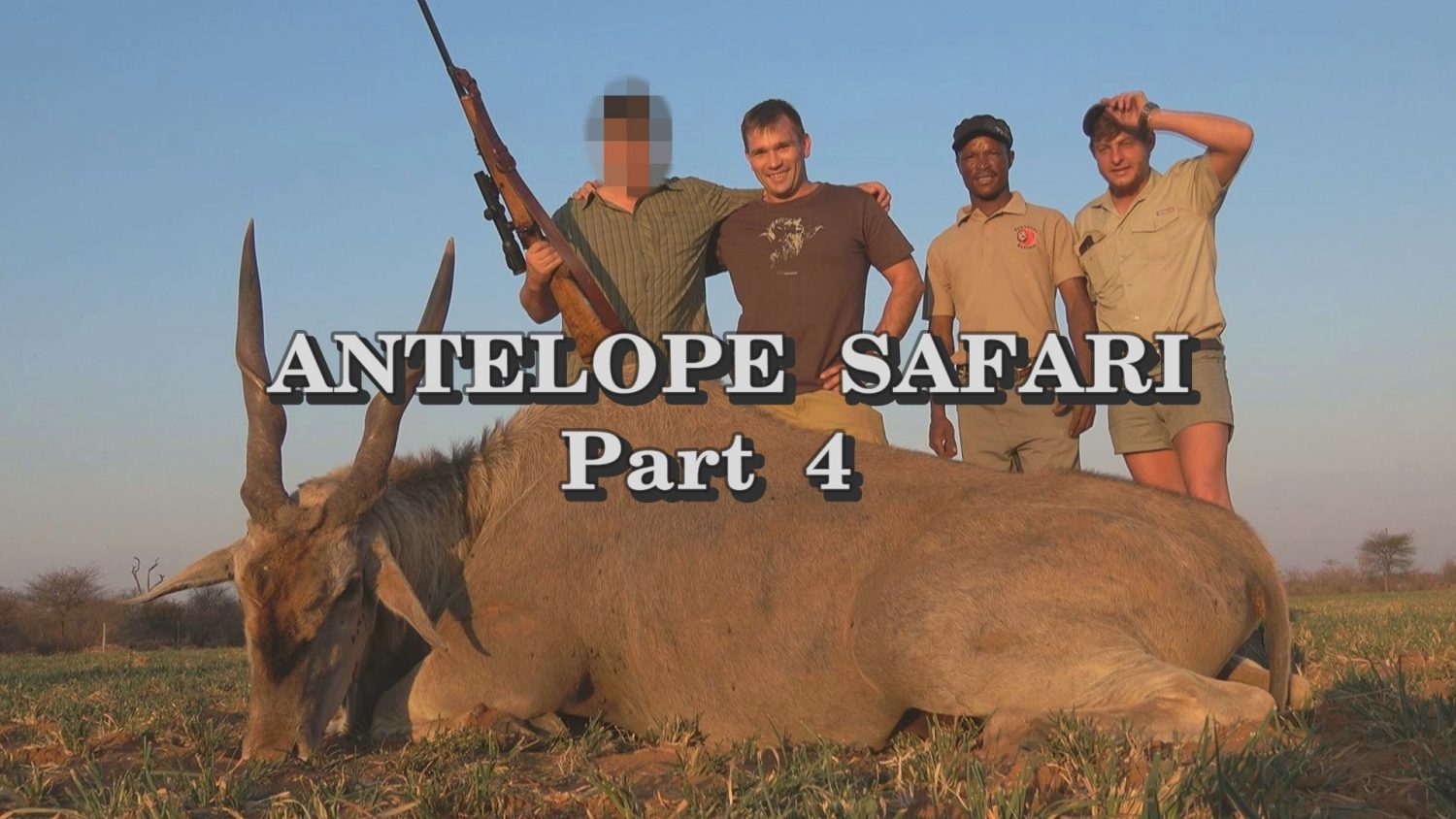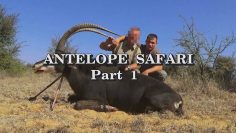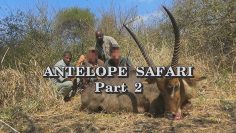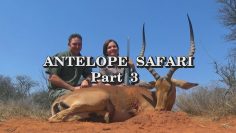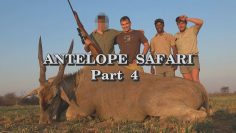Antilope Safari – Part 4
Directors
Biographical
“Hunters in Action” is founded and owned by the photographer and professional hunter Norbert Fenyvesi. Norbert is specialized in hosted hunting trips worldwide where he accompanies and guides hunters around the globe. With Norbert’s more than 200 travel days every year, you can expect continuously new exciting film content on this channel.
Antelope Safari (approx. 20 Min/Part)
The majority of the antelope species living on our planet is found on the African continent. The antelope species, evolved over millions of years, have populated the Dark Continent with an exceptional richness of species and diversity. They have populated every place from the open grasslands and groves of the savanna through the thorny thickets all the way to the humid green jungle teeming with life. From coastal areas to high altitudes, from dry deserts to swamps, antelope species can be found everywhere. They demonstrate tremendous differences in terms of habitat and behaviour, and mostly, appearance. Yet they all certainly share one feature. The males of all species carry horns. The sizes and shapes of the horns of the various African antelope species are also significantly diverse, but it is this very diversity of headdresses that attracts trophy hunters to African hunting safaris by the hundreds of thousands. In our “Antelope safari” series, we will now introduce the most significant African antelope species, whose headdresses are the musts in the collections of all globetrotting trophy hunters.
Gemsbok
Gemsbok is one of the most common large antelope species. Fully grown males stand about 120-130 cm at the shoulder, weighing up to 250 kg. Gemsbok have short, light brownish-grey hair. A blackish stripe extends from juncture of the front elbow and leg along the lower flank of each side. A similar blackish stripe extends along the spine, slightly broadening out at the rump. Their tails are similar to those of horses, long and black in colour. The characteristic black-white pattern of the heads of gemsbok is recognisable from greater distances. Telling males from females requires great experience however, as they have no distinguishing outward features noticeable from a distance. A further point making recognition difficult is that both genders have long, straight or slightly curved, spear-like horns. The horns of the males are thicker, while those of the females tend to be longer. A pattern of rings can be observed at the bases of the horns. Gemsbok is indeed a tough game to hunt. It is capable of covering longer distances even after having taken a perfect hit. 7 mm caliber or larger weapons are recommended for hunting gemsbok.
Scimitar-horned oryx
The scimitar-horned oryx is somewhat smaller than the gemsbok. The male stands around 100-120 cm at the shoulder, weighing about 200 kg. They are almost completely coated with short, white hair. A red-brown spot, so typical of this subspecies, extends from the throat to the middle of the front legs. The black markings on the head and the black stripes on the side and back of the gemsbok are completely missing on the scimitar-horned oryx. Its name is given by its long horns, curving backwards in the form a scimitar, present on both males and females. They have adapted to heat and drought perfectly. Its musculature is also lean and haggard. A weapon larger than 7 mm caliber is by all means recommended to hunt down a scimitar-horned oryx.
Sable antelope
The sable antelope is a large antelope species of impressive appearance. Males reach about 140 cm at the shoulder and may weigh up to 300 kg. The front part of the body is compact and robust, characterised by a high shoulder and a thick neck. Sable antelopes have blackish coats. A black, erect mane extends from the bases of the horns to the middle of the back. Its horns are very large, often even longer than 1 m. They are curved backward in a semicircle and are pointed as needles. A large part of the horns is ridged. Contrary to oryx species, it is far more water-bound; its habitats are therefore generally found near water sources. It is an aggressive, tough game. A 7-8 mm caliber weapon is required as a minimum to hunt it down.
Roan antelope
Roan antelopes, as their name suggests, are roan (reddish brown) in colour. Similarly to gemsbok, a black-white pattern is visible on their heads. They have manes from the neck to the shoulder. Both males and females have horns curved backwards and almost completely ridged, but those of the males are longer and thicker. A fully grown male may measure up to 150-160 cm at the shoulder, weighing up to 350 kg. It is a large animal with a strong build, requiring a 7-8 mm caliber weapon to safely hunt it down.
Waterbuck
Waterbuck is not an aquatic animal. It name stems from its intolerance to dehydration, thus inhabiting areas close to sources of water. A fully grown male is a strong animal with a robust build. It stands about 140-150 cm at the shoulder, weighing up to 300 kg. Only the males wear horns. The horns are strong, curved slightly forward and have rings almost over their entire length. The coat colour varies from brown to grey. A characteristic wide white elliptical spot can be observed on the bottom of the animal. A precise shot with an 8 mm caliber weapon will hunt it down without problems.
Red hartebeest
Red hartebeests are an antelope species of unique appearance, with relatively large bodies. The average shoulder height of males is 120-130 cm, with body weight around 160-200 kg. Due to the pronounced hump on the shoulders, the back and bottom are markedly sloping backwards. The head is elongated and thin with a noticeably high coronal bone. Red hartebeests have dark-reddish brown coats. They are of the fastest and most persistent runners among the antelope species. They gallop in a characteristic bouncing fashion. Both males and females have horns resembling bicycle handlebars, but those of the males is far larger and stronger. It is a hard-to-hunt and tough game. A 8 mm caliber weapon is recommended as a minimum to hunt it.
Coke’s hartebeest
Coke’s hartebeest or kongoni, is very similar to red hartebeest in terms of body size and build, but there are a few marked differences, naturally. The kongoni is far lighter, yellowish-brownish in colour, and the horns on the high coronal bone spread out sideways and forward instead of pointing upwards. The horns are more markedly ringed than those of the red hartebeest.
Wildebeest
The wildebeest is one of the most common herbivores of the African savannas. It has a number of subspecies, which show characteristic differences from one another, albeit to small extents, predominantly in terms of size, colour and horn shape. Their common feature is that they rather resemble a smaller buffalo than an elegant antelope, although wildebeest undeniably belongs to the subfamily of Alcelaphinae.
Blesbok
The mid-sized blesbok prefers large, open grasslands. It stands around 1 m at the shoulder, weighing about 70-80 kg. Body colour is reddish chestnut brown, with the underbelly and the legs white. A characteristic of the blesbok is the prominent white blaze on the face, extending from the snout to the forehead. Both sexes carry slightly curved, lyre-shaped, ringed horns. Male horns are longer and thicker. It is a typically tough antelope species. To hunt it down, high penetrating power projectiles heavier than 10 g are recommended.
White blesbok also exist. These specimen do not belong to a separate subspecies. In terms of body size, features and horn shape, they are perfectly identical to their reddish-brownish mates, they simply carry the genetic colour disorder characteristic of the species.
Impala
The impala is a delicate, medium-sized antelope common to savannas of eastern Africa. The male impala reaches an average of 90 cm at the shoulder and weighs 60-70 kg. It has a coat smooth to the touch and bright reddish brown in colour. The underbelly is white. The bushy bright tail features a solid black stripe along the midline. Thin but conspicuous black streaks run on both sides from the buttocks to the upper hindlegs. The bucks carry heavily ringed, characteristic lyre-shaped horns.
Grant’s gazelle
Grant’s gazelles have a light reddish brown coat with the underbelly and the inside of the legs white. A characteristic white stripe extends along the two sides of the head, all the way to the nose. The area around the eyes is black. Males have much larger and stronger lyre-shaped horns than females, clearly ringed almost to the tip.
Gerenuk
Gerenuks are primarily found in the semi-dry thickets of East Africa. It got its name from its exceptionally long neck. It often picks foliage by standing erect on its hindlegs and elongating its neck.
Fully grown males may stand 1 m at the shoulder and weigh as much as 50 kg. It coat is darker on the dorsal parts and lighter reddish brown on the sides.
The underbelly and the inside of the legs are white. White rings surround the black spots around its eyes. In comparison to its head size, its ears are surprisingly large. Females do not carry horns. The heavily ringed, lyre-like horns are present only on males.
Thomson’s gazelle
Thomson's gazelle is considered relatively small among gazelle species. A distinctive black band runs across the flanks. The slightly curved S-shaped horns, highly ringed, measure up to 50 cm on stronger males.
Southern or common reedbuck
The common reedbuck, although not keen on entering water, it is strongly bound to water due to its nutritional habits, as it only eats herbaceous plants, mostly sedge and young reed shoots. Males are considerably larger than females and only they carry horns. Males have horns spread out in a V shape in anterior view, and in side view they gently curve back then growing upwards they incline forward.
Mountain reedbuck
The mountain reedbuck is found in certain mountainous regions of East and South Africa. It is far smaller than a common reedbuck; about one third in size. Its horns are accordingly smaller.
Springbok
The colour and patterns of the springbok’s coat shows some limited resemblance with that of the Thomson's gazelle, but the animal has a larger build and the horn is totally different in shape. The headdress of the springbok is heavily ringed, curved in an S-shape and lyre-shaped. The length of the horns may reach 30 cm.
Steenbok
Steenboks belong to Neotragini, a tribe of small antelopes. They stand 50-60 cm at the shoulder, weighing 8-10 kg. Ears are particularly large with a V-shaped black pattern on the snout. Only the males wear horns. The horns are smooth, straight, parallel and 10-15 cm in length.
Damara Dik-dik
The dik-dik is one of Africa’s smallest antelope species. It only weighs 4-5 kg. Dik-diks are named for the alarm calls they make when fleeing. Males carry straight horns 6-8 cm in length.
Eland
The eland is the largest African antelope species. A larger male may stand as high as 190 cm at the shoulder, with body weight nearing 1 ton. Both males and females wear spiraled horns spread out in a V-shape. Fully natured bulls usually have dark heads, brownish fur on their foreheads and a large dewlap.
Greater kudu
The greater kudu is an attractive antelope with a large build. An adult bull may stand 150 cm at the shoulder and may weigh as much as 400 kg. They have characteristic vertical white stripes along their torso and manes on the neck and the shoulder hump. The huge horns of the largest bulls, resembling giant corkscrews, may even be longer than 150 cm.
Nyala
The average body weight of fully grown nyala bulls is around 160-180 kg. Females are considerably smaller, have reddish brown coats and are hornless. Bulls wear typical, slightly spiraled horns. The lower part of the legs is yellowish brown. A light mane extends along the dorsal region. A long, dark mane hangs from the lower part of the neck, all the way to the hind legs, along the two sides of the belly.
Bushbuck
The bushbuck is one of the smallest of the spiral-horned antelope species. A small-sized relative of the nyala and a true master of camouflage.




